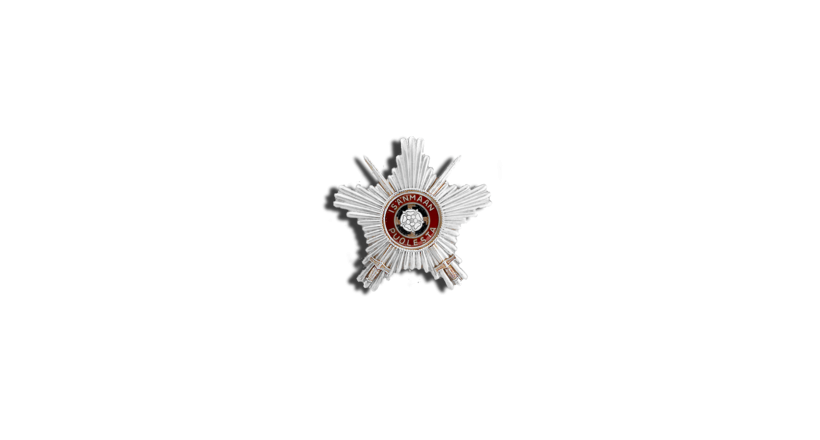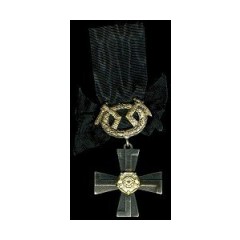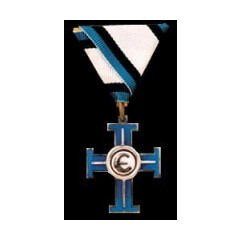The Order of the Cross of Liberty (Finnish: Vapaudenristin ritarikunta; Swedish: Frihetskorsets orden) is one of three official orders in Finland, along with the Order of the White Rose of Finland and the Order of the Lion of Finland. The President of Finland is the Grand Master of the two orders, and usually of the Order of the Cross of Liberty as well, Grand Mastership of which is attached to the position of Commander-in-chief. In 1944, Carl Gustaf Emil Mannerheim (1867–1951) was designated as Grand Master for life. The orders are administered by boards consisting of a chancellor, a vice-chancellor and at least four members. The orders of the White Rose of Finland and the Lion of Finland have a joint board.
The Order of the Cross of Liberty was founded on March 4, 1918, upon the initiative of General C. G. E. Mannerheim. The Finnish artist Akseli Gallen-Kallela was commissioned to design the Order's insignia with the swastika.
At its foundation there were seven classes: grand cross, cross of liberty (1st to 4th class) and the medal of liberty (1st and 2nd class). The decorations of the Order of the Cross of Liberty were initially conferred only in time of war. A decree was issued on 18 August 1944 enabling the decorations to be awarded in peacetime.
The Cross of Liberty has a red ribbon when it is granted in wartime and a yellow ribbon when it is awarded in peacetime.
Decorations of the order were awarded in great numbers during the World War II, partly due to Marshal Mannerheim having issued an order that wounded soldiers were to be awarded for their sacrifice, and Finland has no separate decoration for wounded. The Cross of Liberty is usually reserved for commissioned officers, with the Medal of Liberty being awarded for soldiers of junior rank and NCOs.






